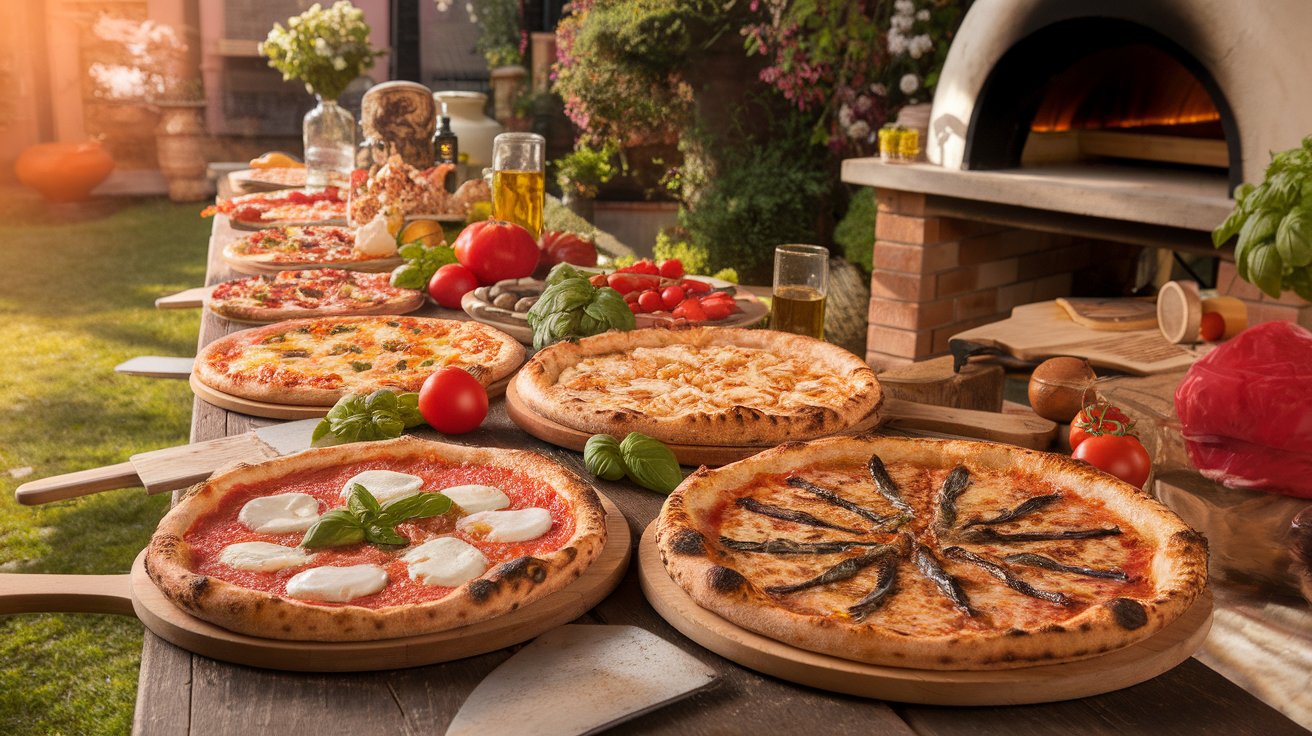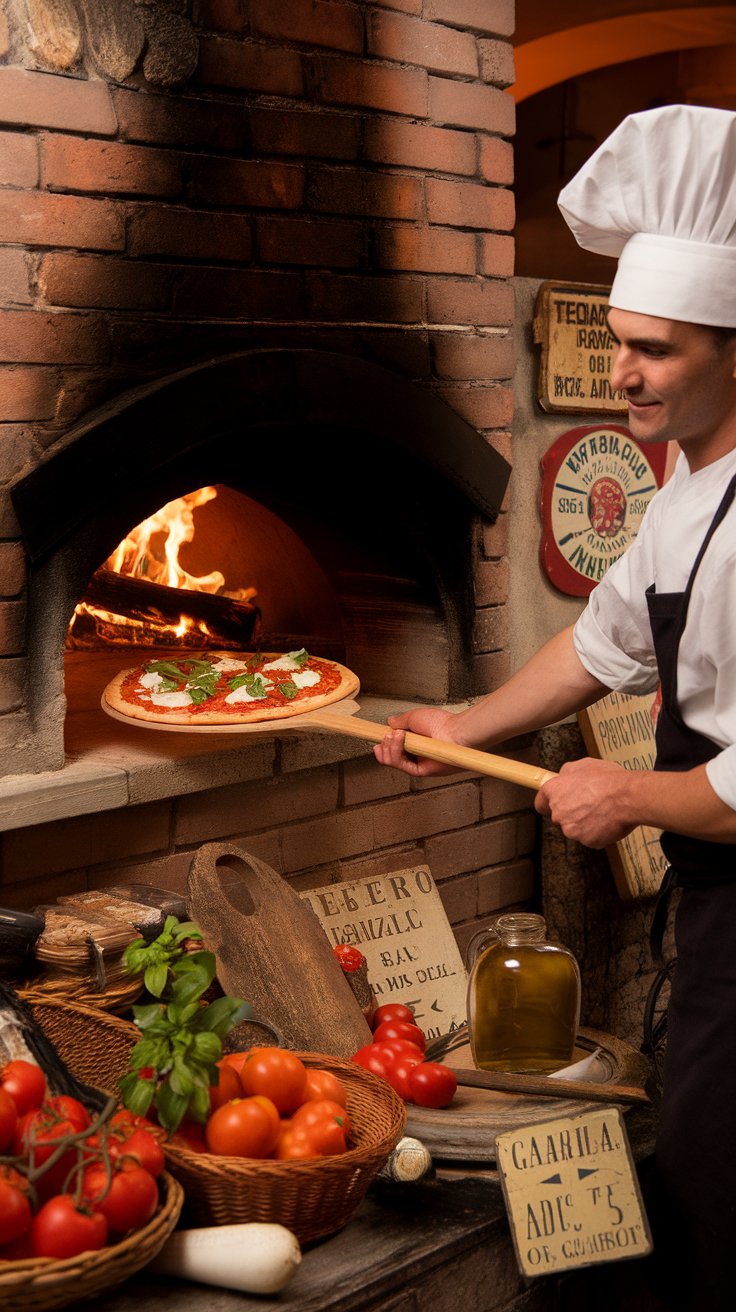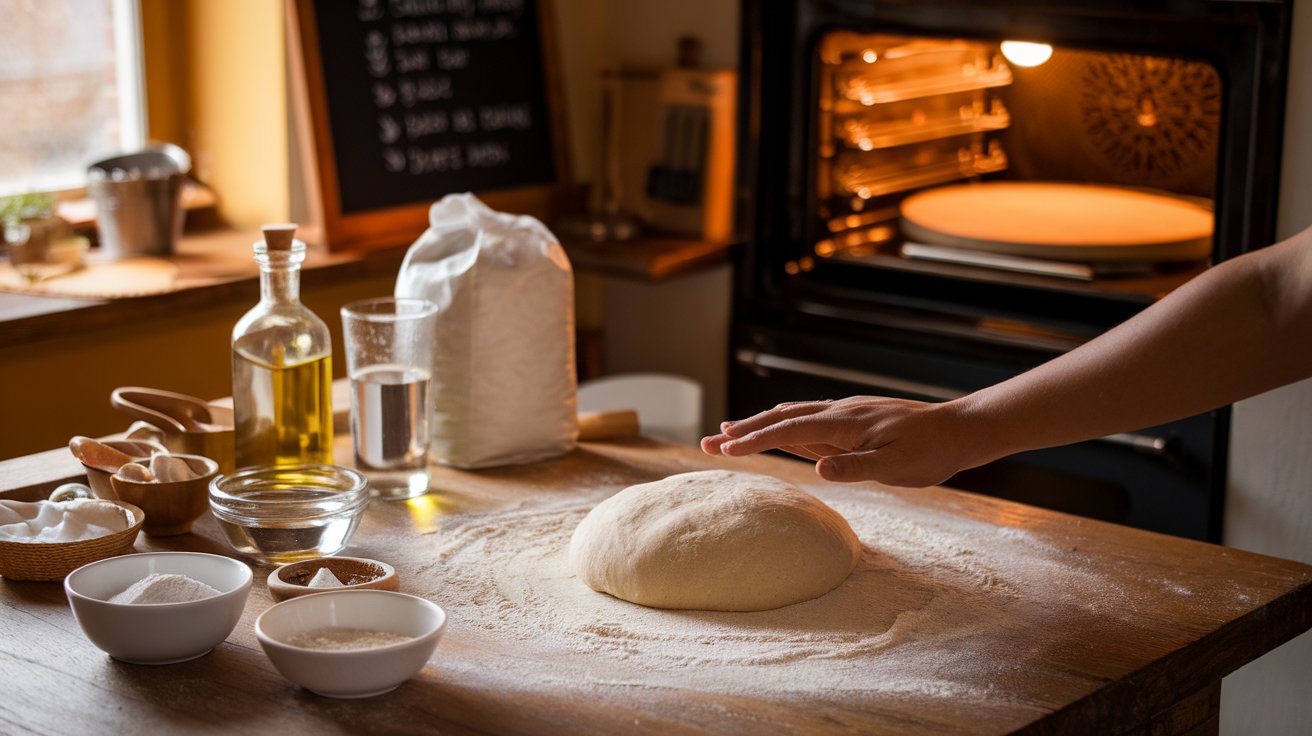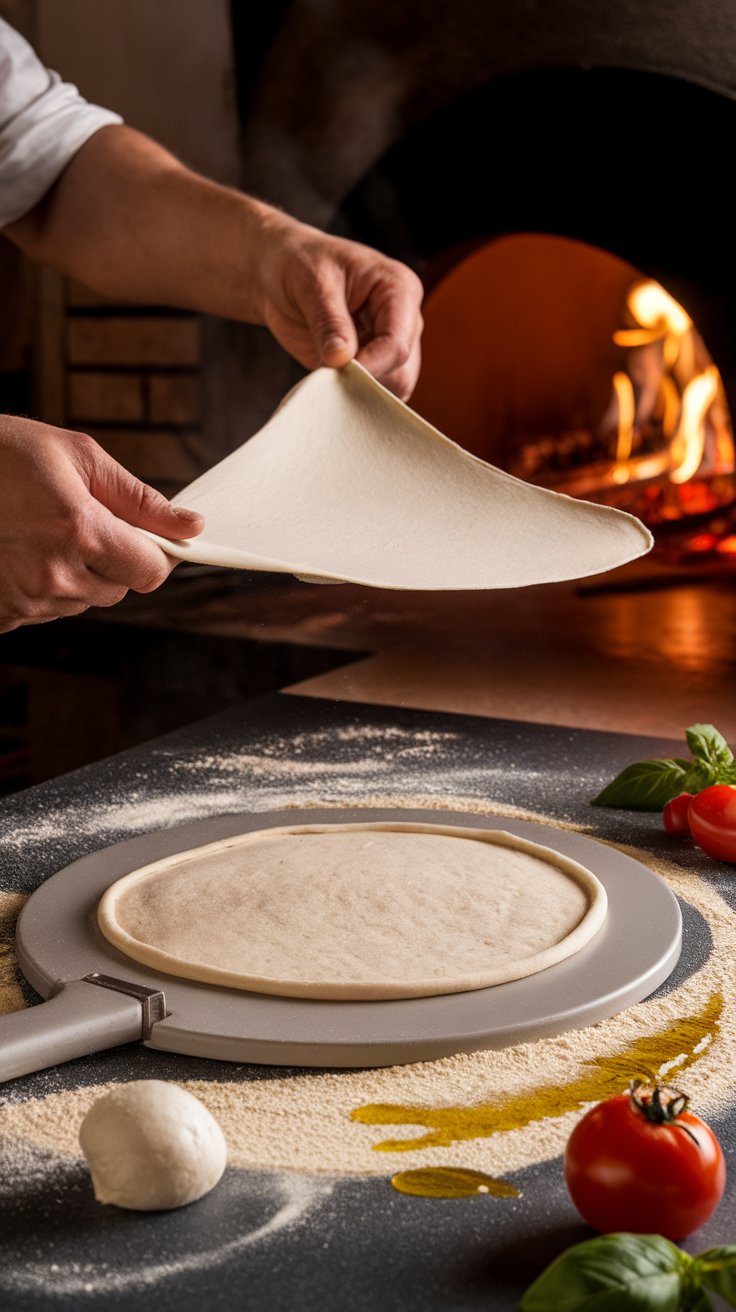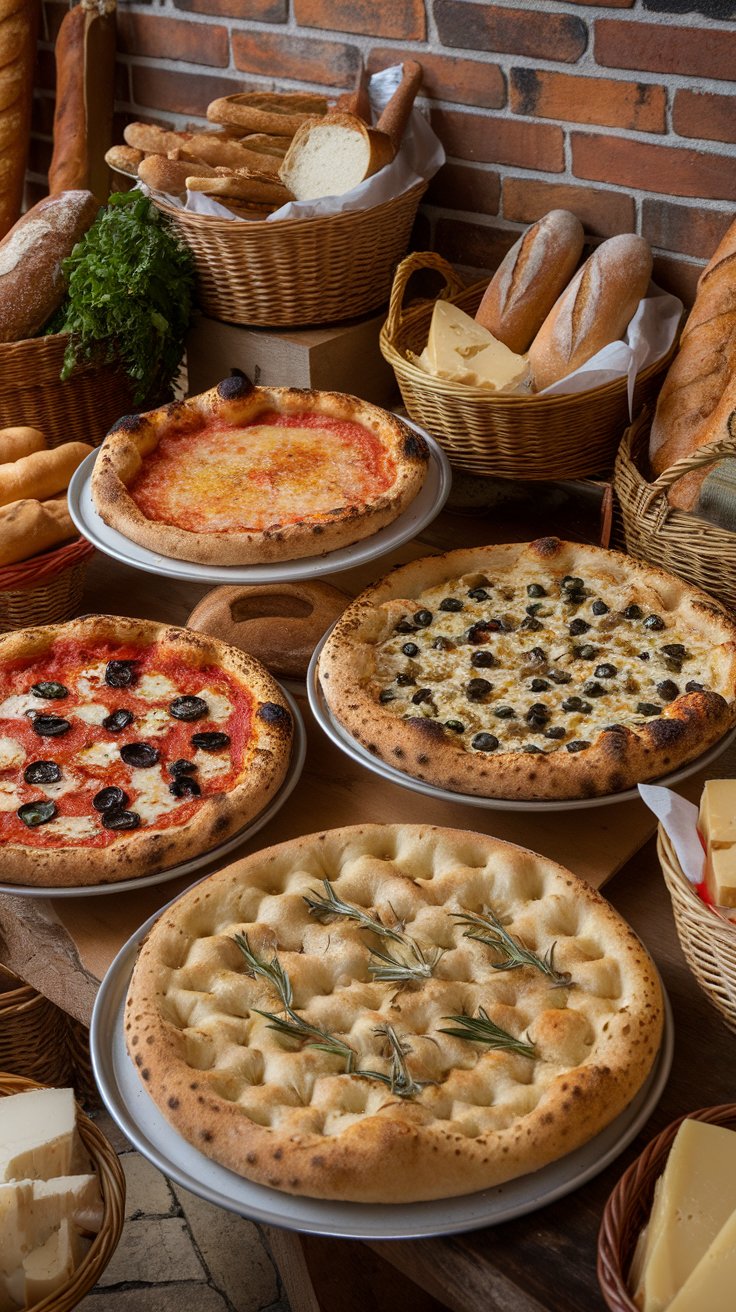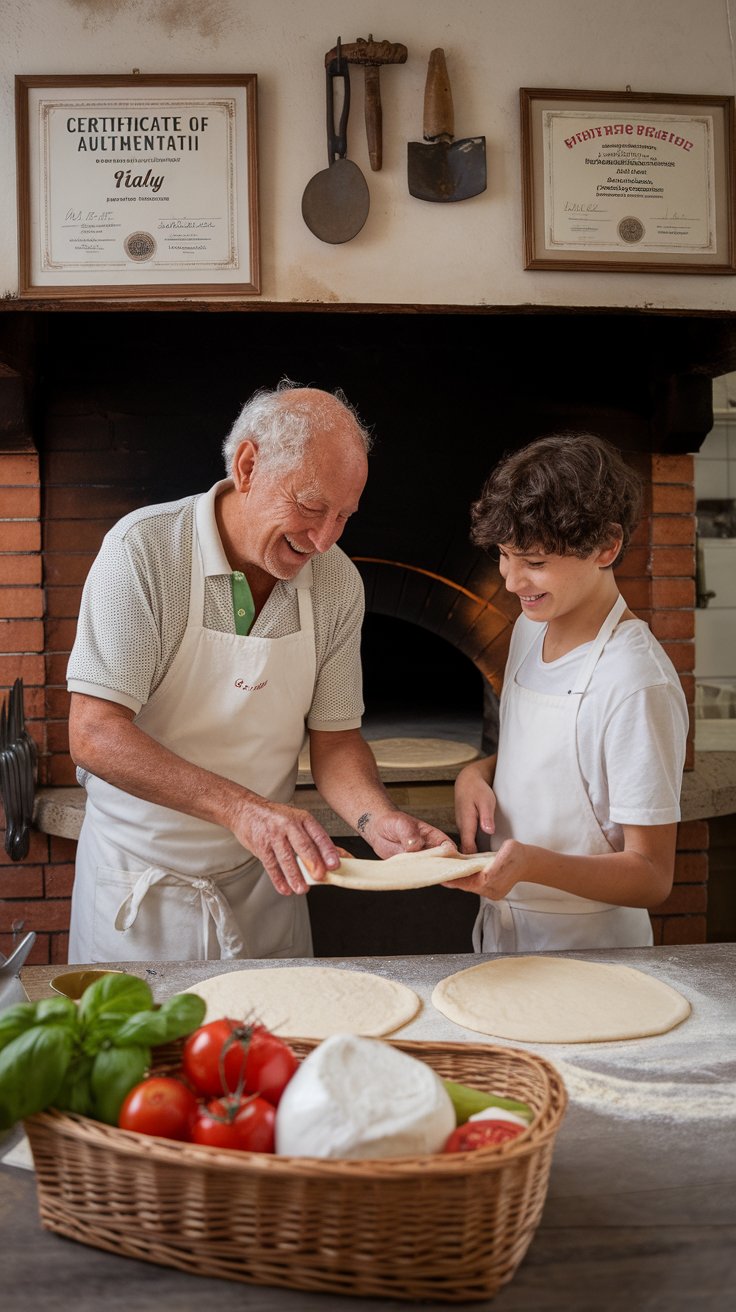Introduction
Italian pizza is more than a beloved dish; it is a symbol of history, culture, and culinary artistry. Originating in Naples, this iconic food represents centuries of tradition, from the invention of Pizza Margherita to the varied styles found across Italy. Crafted with simple yet high-quality ingredients such as San Marzano tomatoes and mozzarella di bufala, pizza showcases the essence of Italian cuisine.
As modern trends threaten traditional practices, preserving the legacy of pizza makers has become crucial. From the wood-fired ovens of Naples to the regional specialties of Sicily and Rome, Italian pizza tells a story of craftsmanship and heritage. By supporting artisanal pizzerias and promoting education, we can ensure that the authentic methods and values that define Italian pizza continue to thrive in a constantly shifting world.
Key Takeaways
- Italian pizza embodies a rich history, originating in Naples and evolving into a symbol of Italian culture.
- Authentic Neapolitan pizza is defined by high-quality ingredients, wood-fired ovens, and traditional techniques.
- Regional pizza styles, such as Sicilian and Roman, highlight the diversity of Italian culinary traditions.
- Certifications like the Associazione Verace Pizza Napoletana play a crucial role in preserving pizza authenticity.
- Supporting artisanal pizzerias and educating future generations ensures the survival of traditional pizza-making.
- Preserving Italian pizza is important to maintaining its cultural significance and global appreciation.
The History and Heritage of Traditional Italian Pizza
Italian pizza boasts a rich history rooted in cultural traditions and simple ingredients. Originating in Naples, pizza evolved from humble flatbreads topped with olive oil and herbs into the beloved dish we know today. The introduction of tomatoes in the 16th century transformed pizza, giving rise to the famous Pizza Margherita, inspired by Queen Margherita of Savoy. Traditional pizza reflects Italy’s regional diversity, with each area adding its own flair. This culinary treasure is not just a meal but a cultural artifact, symbolizing community and craftsmanship. With practices passed through generations, preserving the heritage of Italian pizza ensures its authenticity remains intact amid modern adaptations.
Origins of Pizza: From Ancient Flatbreads to Neapolitan Delight
The history of pizza begins with ancient flatbreads, which were precursors to today’s beloved dish. Early versions, topped with olive oil, herbs, and garlic, were staples in Mediterranean diets. The pivotal transformation occurred in Naples during the 16th century with the arrival of tomatoes from the New World. This innovation led to creations like Pizza Margherita, a culinary homage to Queen Margherita of Savoy. Recognizing pizza’s cultural and historical significance ensures that this dish remains a celebrated symbol of Italian heritage.
Cultural Significance of Pizza in Italy
Pizza is more than just a dish in Italy—it is a representation of community, tradition, and identity. Pizzerias often serve as gathering places where locals connect over shared meals. The techniques and recipes are passed down through generations, reinforcing a sense of pride in preserving authenticity. By understanding its role in Italian society, we appreciate pizza not merely as food, but as an enduring cultural icon.
Key Ingredients and Techniques for Perfect Neapolitan Pizza
1. San Marzano Tomatoes Grown in the volcanic soil near Mount Vesuvius, these tomatoes offer a natural sweetness and minimal acidity, forming the cornerstone of a truly authentic sauce.
2. Mozzarella di Bufala This buffalo milk cheese delivers a rich, creamy flavor that pairs seamlessly with the tangy tomato sauce and crisp crust.
3. Double-Zero Flour Also called “00 flour,” this finely milled variety yields the soft, airy dough characteristic of Neapolitan pizza. Its elasticity allows for a thin, resilient crust.
4. Wood-Fired Oven Temperatures of around 900°F create the charred exterior and soft interior that define a classic Neapolitan pizza, highlighting the importance of rapid cooking.
5. Olive Oil and Fresh Basil Extra virgin olive oil and fragrant basil leaves complete the pizza’s flavor profile, imparting an inviting aroma and taste.
6. Hand-Stretched Dough Carefully stretching the dough by hand helps maintain its structure, promoting a satisfying balance between chewiness and crispiness.
The Art of Crafting Authentic Neapolitan Pizza
Neapolitan pizza is celebrated for its simplicity and artistry, adhering to rigorous standards that honor its Italian origins. The dough is prepared using finely milled flour, yeast, water, and salt, then fermented to achieve the signature airy crust. Authentic Neapolitan pizzas are baked in wood-fired ovens, reaching temperatures of up to 900°F, creating the ideal balance of a charred exterior and soft interior. Toppings are minimal but high-quality, such as San Marzano tomatoes, fresh mozzarella di bufala, and fresh basil. This style encapsulates the heart of Italian pizza-making, highlighting how mastery of technique can transform simple ingredients into culinary excellence.
Key Ingredients for True Neapolitan Pizza
Creating a truly authentic Neapolitan pizza starts with four primary elements: finely milled flour, fresh yeast, water, and salt. Sourcing San Marzano tomatoes and fresh mozzarella di bufala is also recommended, as these add the distinctive flavor Italians cherish. Extra virgin olive oil and basil contribute both aroma and color, bringing a harmonious finish to the dish. By respecting these foundational elements, pizza makers uphold the taste and legacy of genuine Neapolitan pizza.
The Role of Wood-Fired Ovens in Neapolitan Pizza
A wood-fired oven is central to achieving the classic Neapolitan style. With the oven’s interior hitting extreme temperatures, the pizza cooks rapidly, sealing in moisture while imparting a light, charred exterior. This delicate process demands attention to time and temperature, ensuring a soft, airy crust that contrasts perfectly with the tangy sauce. Wood-fired cooking isn’t just a method—it’s a time-honored tradition that shapes every bite.
Case Study: Preserving the Art of Neapolitan Pizza with AVPN Certification
The Associazione Verace Pizza Napoletana (AVPN) has been instrumental in safeguarding the authenticity of Neapolitan pizza. Established in 1984, the organization sets strict guidelines for ingredients, techniques, and processes to ensure that traditional pizza-making practices are preserved. Certified pizzerias, such as Da Michele in Naples, exemplify this dedication by adhering to standards like using San Marzano tomatoes, mozzarella di bufala, and wood-fired ovens.
AVPN certification has not only protected the cultural identity of Neapolitan pizza but also enhanced its global recognition. By promoting education and offering training programs for aspiring pizza makers, the association ensures that future generations continue to uphold these traditions. Their advocacy has also led to the inclusion of Neapolitan pizza-making on UNESCO’s Intangible Cultural Heritage list, solidifying its place in history as more than just a culinary creation but a cultural treasure.
Regional Italian Pizza Styles: From Focaccia to Roman Crusts
Italy’s diverse regions each bring unique interpretations to pizza, showcasing their culinary identities. Liguria offers focaccia, a thick and airy bread often topped with olive oil and herbs, while Sicily’s rectangular pizza features bold flavors like anchovies and capers. Rome presents a thin and crispy crust known as pizza Romana, contrasting with the pliable Neapolitan style. Variations like pizza al padellino, baked in pans, highlight the vast possibilities within this beloved dish. These regional pizzas celebrate the innovation and tradition rooted in Italian cuisine, reflecting how geography and local ingredients influence a timeless favorite.
The Charm of Sicilian and Roman Pizzas
Sicilian pizza, famous for its thick, rectangular crust, often packs a flavorful punch with ingredients like capers and anchovies. On the flip side, Roman pizza is prized for its crispy, thin crust and straightforward toppings that emphasize quality over quantity. Both styles highlight the country’s regional flair, demonstrating that pizza in Italy can be wildly different depending on the locale and personal preferences.
The Unique Appeal of Ligurian Focaccia
Ligurian focaccia distinguishes itself with a light, airy texture and the generous drizzle of olive oil that tops each loaf. Seasoned with sea salt, fresh herbs, or occasionally onions, it caters to a variety of tastes. Served in bakeries or local cafes, focaccia’s versatility makes it a popular choice for snacks, sandwiches, or as a standalone meal. This style underscores how simple ingredients can deliver both comfort and flavor.
“Pizza is like the entire world condensed into a single dish, with each region adding its unique flavor and identity.” — Massimo Bottura, Italian Chef
Safeguarding the Legacy of Italian Pizza Makers
The legacy of Italian pizza makers faces challenges as mass production and modern shortcuts risk overshadowing time-honored traditions. Certifications like the Associazione Verace Pizza Napoletana defend the integrity of Neapolitan methods, while organizations advocate for cultural recognition through UNESCO’s Intangible Cultural Heritage list. Supporting family-run pizzerias, prioritizing geographically protected ingredients, and raising awareness about regional techniques are key strategies in preserving authentic Italian pizza. Empowering younger chefs with formal training programs and emphasizing sustainable approaches ensures that the craft continues to flourish for generations to come.
The Role of Certifications in Preserving Authenticity
Certifications like AVPN aim to maintain the high standards set by pioneers of Neapolitan pizza. By outlining specific ingredient requirements and baking methods, these certifications help small pizzerias gain credibility while honoring the long-standing traditions of Italian pizza making. In doing so, they safeguard cultural identity and protect the integrity of this globally adored dish.
Educating the Next Generation of Pizza Makers
Passing down recipes and techniques through training programs and apprenticeships plays a major role in preserving authentic pizza traditions. These educational efforts inspire upcoming chefs to value the heritage, while also leaving room for creativity. As a result, the vibrant art of pizza making continues to evolve without losing its original spirit, allowing future generations to share in Italy’s storied culinary heritage.
Conclusion
Italian pizza is a testament to the enduring legacy of tradition and innovation within Italian cuisine. From the humble beginnings of flatbreads to the globally celebrated Neapolitan style, pizza has evolved into a dish that embodies the heart of Italy. Its regional variations, like Ligurian focaccia and Roman thin crusts, demonstrate the diversity and creativity of Italian culinary traditions.
Preserving the authenticity of Italian pizza requires more than appreciation—it demands action. Supporting family-run pizzerias, advocating for certifications, and educating future generations are vital steps in safeguarding this cultural treasure. By honoring the art of pizza-making and its rich history, we ensure that this beloved dish continues to inspire and connect people worldwide.


